Notes For All Chapters Maths Class 6
Introduction to Integers
There are so many situations where we have to use negative numbers. Negative Numbers are the numbers with the negative sign. These numbers are less than zero.
ExampleF
We use negative numbers to represent temperature.
Where +10 shows 10° hotter than 0 and -10 shows 10° colder than 0.
Successor and Predecessor
If we move 1 to the right then it gives the successor of that number and if we move 1 to the left then it gives the predecessor of that number.
| Number | Predecessor | Successor |
| 2 | 1 | 3 |
| -8 | -9 | -7 |
| -3 | -4 | -2 |
| 4 | 3 | 5 |
Tag me with a sign
(i) In the case of accounting we use negative sign to represent the loss and positive to represent the profit.
(ii) In the case of sea level, we use a negative sign to represent the height of the place below the sea level and positive sign to represent the place above the sea level.
Integers
The collection of whole numbers and negative numbers together is called the Integers.
All the positive numbers are positive integers and all the negative numbers are negative integers. Zero is neither a positive nor a negative integer.
Representation of Integers on Number Line
To represent the integers on a number line, first, we have to draw a line and mark a point zero on it.
Then mark all the positive integers on the right side with the same distance as 1, 2, 3… and the entire negative numbers on the left side as -1,-2,-3…
Example
To mark (-7) we have to move 7 points to the left of zero.
Ordering of Integers
From the above number line, we can see that as we go to the right side the numbers are getting larger and as we move to the left the numbers are getting smaller.
Hence, any number on the right side on the number line is greater than the number on its left.
Example
5 is to the right of 2 so 5>2.
4 is to the right of -2, so 4>-2.
-4 is to the left of -1, so -4 < -1.
Some facts about Integers
(i) Any positive integer is always greater than any negative integer.
(ii) Zero is less than every positive integer.
(iii) Zero is greater than every negative integer.
(iv) Zero doesn’t come in any of the negative and positive integers.
Addition of Integers
1. Addition of Two Positive Integers
If you have to add two positive integers then simply add them as natural numbers.
(+6) + (+7) = 6 + 7 = 13
2. Addition of Two Negative Integers
If we have to add two negative integers then simply add them as natural numbers and then put a negative sign on the answer.
(-6) + (-7) = – (6+7) = -13
3. Addition of One Negative and One Positive Integer
If we have to add one negative and one positive integer then simply subtract the numbers and put the sign of the bigger integer. We will decide the bigger integer ignoring the sign of the integers.
(i) (-6) + (7) = 1 (bigger integer 7 is positive integer)
(ii) (6) + (-7) = -1(bigger integer 7 is negative integer)
Addition of Integers on a Number Line
1. Addition of Two Positive Integers
Example
Add 3 and 4 on the number line.
Solution
To add 3 and 4, first, we move 3 steps to the right of zero then again move 4 steps to the right from point 3.
As we reached to the point 7, hence (+3) + (+4) = +7
This shows that the sum of two positive integers is always positive.
2. Addition of Two Negative Integers
Example
Add (-2) and (-5) using a number line.
Solution
To add (-2) and (-5), first we move 2 steps to the left of zero then again move 5 steps to the left of (-2).
As we reached to the point (-7), hence (-2) + (-5) = -7.
This shows that the sum of two negative integers is always negative.
3. Addition of One Negative and One Positive Integer
a. If a positive integer is greater than the negative integer
To add (+6) and (-2), first we have to move 6 steps to the right from zero then move 2 steps to the left of point 6.
As we reached to the point 4, hence (+6) + (-2) = +4
b. If a negative integer is greater than the positive integer
To add (-5) and (+4), first we have to move 5 steps to the left of zero then move 4 steps to the right from point (-5).
As we reached to the point -1, hence (-5) + (+4) = (-1)
4. Additive Inverse
If we add numbers like (-7) and 7 then we get the result as zero. So these are called the Additive inverse of each other.
If we add (-2) + (2), then first we move 2 steps to the left of zero then we move two steps to the right of (-2).so finally we reached to zero.
Hence, if we add the positive and negative of the same number then we get the zero.
Example
What is the additive inverse of 4 and (-8)?
Solution
The additive inverse of 4 is (-4).
The additive inverse of (-8) is 8.
Subtraction of Integers on Number Line
If we subtract an integer from another integer then we simply add the additive inverse of that integer.
(-3) – (-2) = (-3) + 2 = -1
(-3) – (+2) = (-3) + (-2) = -5
1. Subtraction of Two Positive Integers
Example
Subtract 2 from 5.
Solution
To subtract 2 from 5, first, we move 5 steps to the right from zero then move 2 steps back to the left.
As we reached to 3 hence, 5 – (+2) = 5 – 2 = 3
2. Subtraction of Two Negative Integers
Example
Subtract (-12) from (-8).
Solution
To subtract (-12) from (-8), first, we have to move 8 steps to the left of zero then move 12 steps to the right of (-8).
As we reached to 4, hence (-8) – (-12) = (-8) + (12) = 4
3. Subtraction of One Negative and One Positive Integer
a. To subtract a positive integer from any other integer.
Example
Subtract 3 from (-4)
Solution
To subtract (-4) from (3), first, we have to move 4 steps to the left of zero then move 3 steps more to the left.
As we reached to (-7), hence (-4) – (+3) = (-4) + (-3) = -7.
b. To subtract a negative integer from any other integer
Example
Subtract (-3) from (4)
Solution
To subtract (-3) from (4), first, we have to move 4 steps to the right of zero then move 3 steps more to the right.
As we reached to (7), hence (4) – (-3) = (4) + (+3) = +7
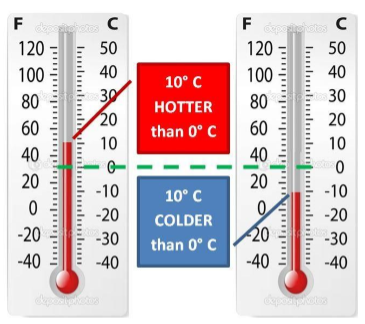
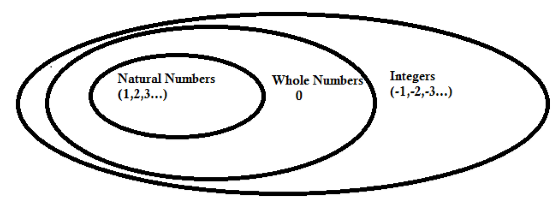
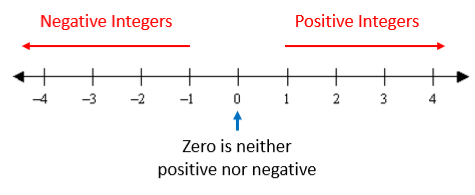
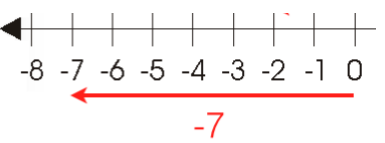

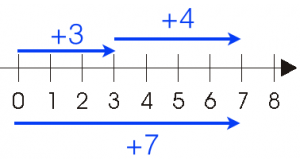

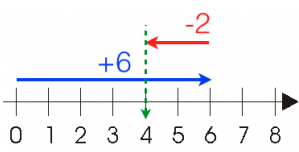
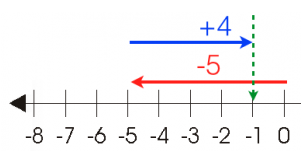


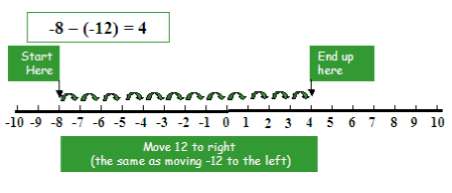
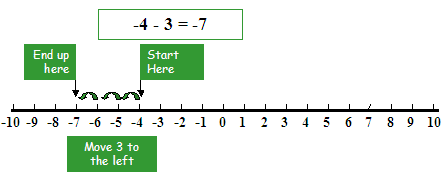
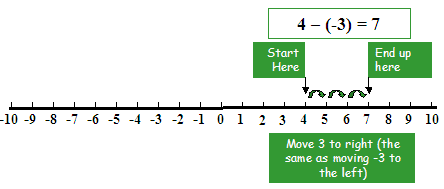

Thank you this notes are very important for me and it helpful for me to understand and solve it
exercise
These notes are very helpful